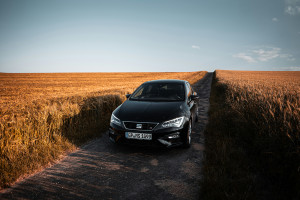Summer road trip safety tips for families with children
Summer is the best time to travel, especially at the end of the season, when there are fewer tourists around, making it easier to travel with kids. The weather is not as scorching, and prices are relatively affordable, so everyone in the family can have a stress-free vacation.
However, since temperatures can still fluctuate, being prepared is necessary. Driving around during the summer can pose several risks if the vehicle is not well-equipped to handle any possible situation, such as unexpected storms. Therefore, if you’re looking for a family summer trip with your car, here are some useful tips to consider for protecting your kids and the vehicle.
Take care of the kids
Driving a vehicle for many hours in the middle of summer can be exhausting and damaging to human health, especially if your AC is not working properly. Driving without it could cause health problems, especially for children.
Leaving kids alone in the car is never an option, as their bodies are more susceptible to the effects of increasing heat than those of adults. For example, they might be prone to heat stroke and heat exhaustion, which may be challenging to diagnose in some cases. Unfortunately, stroke misdiagnosis claims can happen, so if you ever experience this with your kids, you could look into how are NHS negligence payouts calculated.
Make everyone wear sunscreen
While many vehicles come equipped with windows that can block UV rays, side windows are not prepared to protect humans, which is why it’s advisable to wear sunscreen in the car. Of course, you can install special window tint to enhance protection, but consider the laws regarding the darkness of the car window tint before doing so.
When choosing a sunscreen, opt for a product with at least 30 SPF, especially for children, that protects against both UVA and UVB rays. Some of these best sunscreens include zinc oxide or titanium dioxide. Be sure to reapply sunscreen every two hours to maintain protection throughout the day.
Inspect your tires
During extreme heat in the summer, it is possible for tires to explode as the air pressure increases to its maximum. This can happen when the car is parked and stays in the sun for too long, or even while driving at high speeds during the middle of the day.
Of course, this is pretty rare, but not impossible. It would be best to ensure you’ve got high-quality tires that can withstand such temperatures. If the tire explodes while you’re driving, an uneventful accident can occur. That is why it’s your responsibility to inspect the tires and replace them when they’ve got uneven wear, for instance, to avoid triggering an accident and injuring other road participants.
Check the brakes
Testing your brakes is essential regardless of their level of safety and efficiency. That’s why you must verify them before each trip to ensure there are no signs of deterioration that can put your life at risk. For example, hearing squealing or feeling like the pedal is spongy requires a professional’s opinion.
You can be sure of the brakes by taking a short drive around. Feeling unusual vibrations or experiencing swerving during braking are also tell-tale signs that something is wrong. Even a visual inspection of the brake pads can offer valuable information about their state. You can scan them through the spokes of the wheel and check if the brakes show any signs of wear. However, if you find yourself driving and the brakes fail, remember to stay calm and hold the steering wheel as you progressively shift to lower gears.
Verify the engine oil
The engine oil is essential for reducing friction and maintaining the engine’s cleanliness. Changing the oil depends heavily on how often you drive the car, your driving style, and the vehicle’s brand. However, checking it frequently can help ensure it remains in good condition. Here are the steps:
- Reading the owner’s manual to find the bonnet where the dipstick is located;
- Taking the dipstick out and wiping the oil excess off;
- Putting the dipstick bank, waiting for a moment, and taking it out again;
- Ensuring the oil levels are within the marks on the dipstick;
- Pouring new oil if necessary while checking the dipstick;
- Closing the bonnet and cleaning any residue left;
Watch out for leaks, which occur when the oil level drops despite topping up. Leaks can trigger smoke from the engine or a burning oil smell, which can damage the vehicle over time.
Equip the vehicle
Considering you’re going on a trip in scorching weather, it is necessary to stock the car with plenty of items to help withstand the weather and ensure the kids are comfortable. Some of the things you will need include:
- Snacks and water supplies;
- First aid kit;
- Smartphone and charger, as well as an external battery;
- Jumper cables, a tire pressure gauge, and a jack;
- Basic repair tools;
- Nonperishable foods and drinking water;
- Emergency blankets and towels;
- Paper towels for cleaning up;
- Flashlight with extra batteries;
Having a paper map can also be helpful when traveling to areas with a weak phone signal. However, planning the route before going on the trip will ensure you’re a bit more familiar with the surroundings and increase the chances of not getting lost. Finally, try to prepare for the forecasted weather in the future, as high temperatures may also be accompanied by extreme rain or winds.
Final thoughts
Family summer trips are the best, especially by car, as you have the freedom to go anywhere you like. However, the weather’s getting hotter by the year, which exposes both the vehicles to wear and ourselves to damaging sun rays. Hence, create a checklist before any trip to verify your car’s tire pressure and oil levels, as well as equip it with necessary items and ensure the AC is functioning properly.


